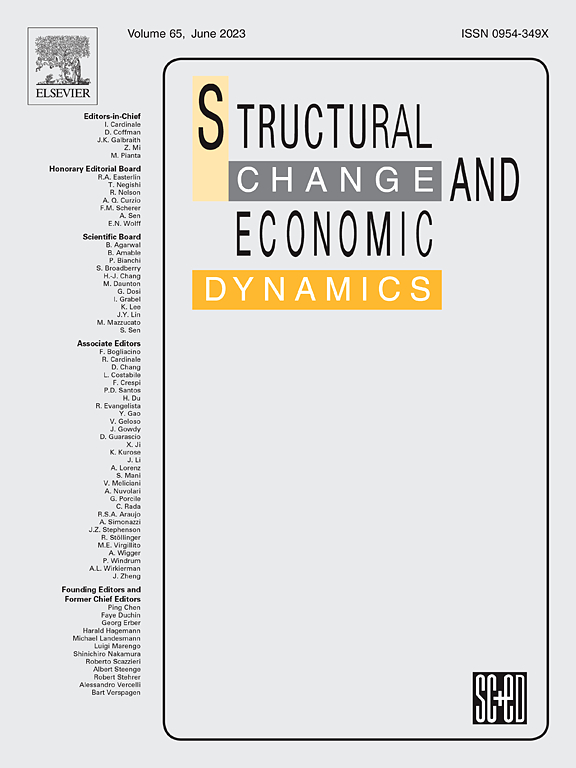Economic gains from geographic shifts in international sourcing
IF 5
2区 经济学
Q1 ECONOMICS
引用次数: 0
Abstract
The geographic evolution of global value chains (GVCs) has been significantly changing the pace and structure of economic development in many countries. We first employ a global input-output (IO) model to quantify the contribution of geographic shifts in international sourcing to China's economic gains. In 2019, China's GDP per capita was 11 % below the world average. We show, however, that the gap would have been 39 % if there had been no international sourcing shifts between 1995 and 2019. We subsequently propose an optimization model in the global IO framework to explore potential strategies which further improve China's GDP per capita. The optimization results suggest that import substitution and export promotion could be two possible strategies. However, these strategies could fail if all countries adopt the same strategies and participate in the non-cooperative competition. Instead, our results suggest that promoting technological upgrading provides more sustainable opportunities for improving a country's gains.
国际采购地域转移带来的经济收益
全球价值链的地理演变已经显著改变了许多国家经济发展的速度和结构。我们首先采用全球投入产出(IO)模型来量化国际采购的地理转移对中国经济收益的贡献。2019年,中国人均国内生产总值比世界平均水平低11%。然而,我们表明,如果1995年至2019年期间没有国际采购转移,这一差距将达到39%。在此基础上,我们提出了一个全球IO框架下的优化模型,以探索进一步提高中国人均GDP的潜在策略。优化结果表明,进口替代和出口促进是两种可能的策略。然而,如果所有国家都采取同样的战略,参与非合作竞争,这些战略可能会失败。相反,我们的研究结果表明,促进技术升级为提高一个国家的收益提供了更可持续的机会。
本文章由计算机程序翻译,如有差异,请以英文原文为准。
求助全文
约1分钟内获得全文
求助全文
来源期刊

Structural Change and Economic Dynamics
ECONOMICS-
CiteScore
9.60
自引率
4.90%
发文量
159
期刊介绍:
Structural Change and Economic Dynamics publishes articles about theoretical, applied and methodological aspects of structural change in economic systems. The journal publishes work analysing dynamics and structural breaks in economic, technological, behavioural and institutional patterns.
 求助内容:
求助内容: 应助结果提醒方式:
应助结果提醒方式:


